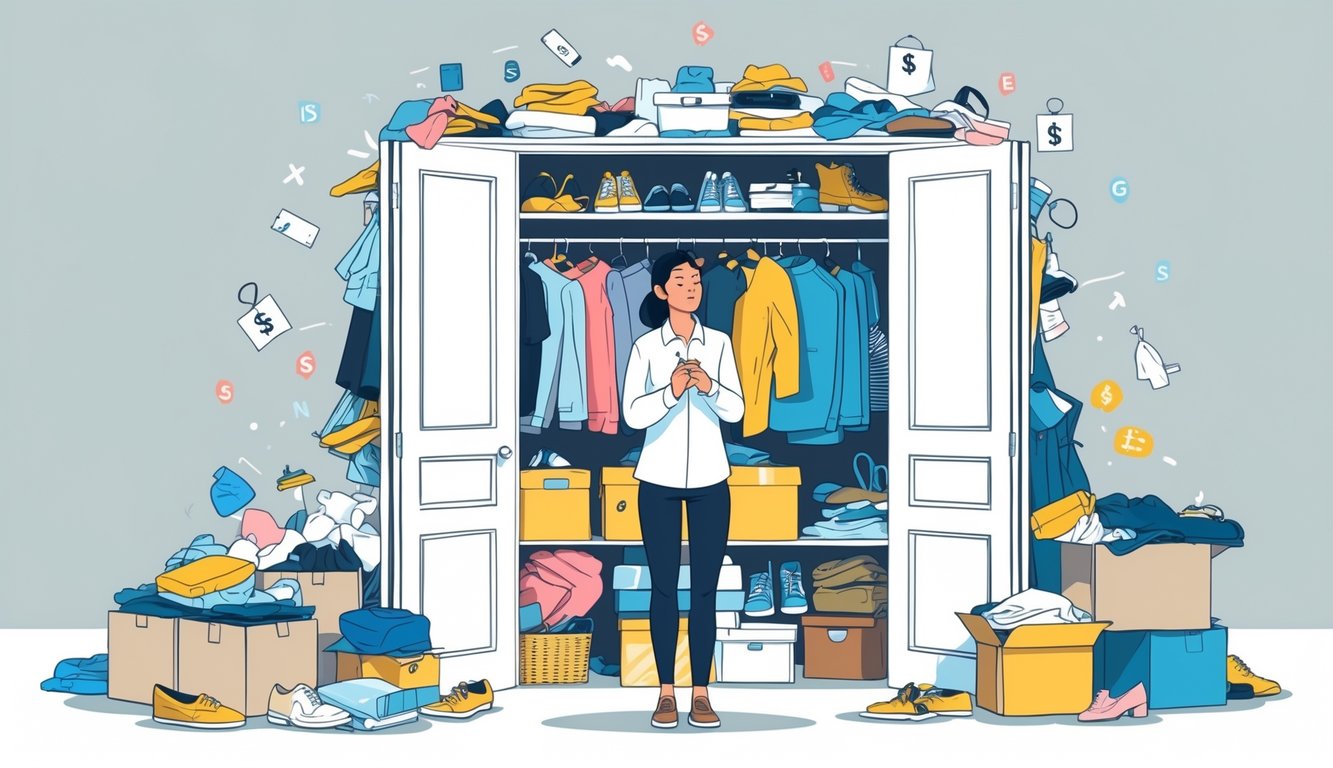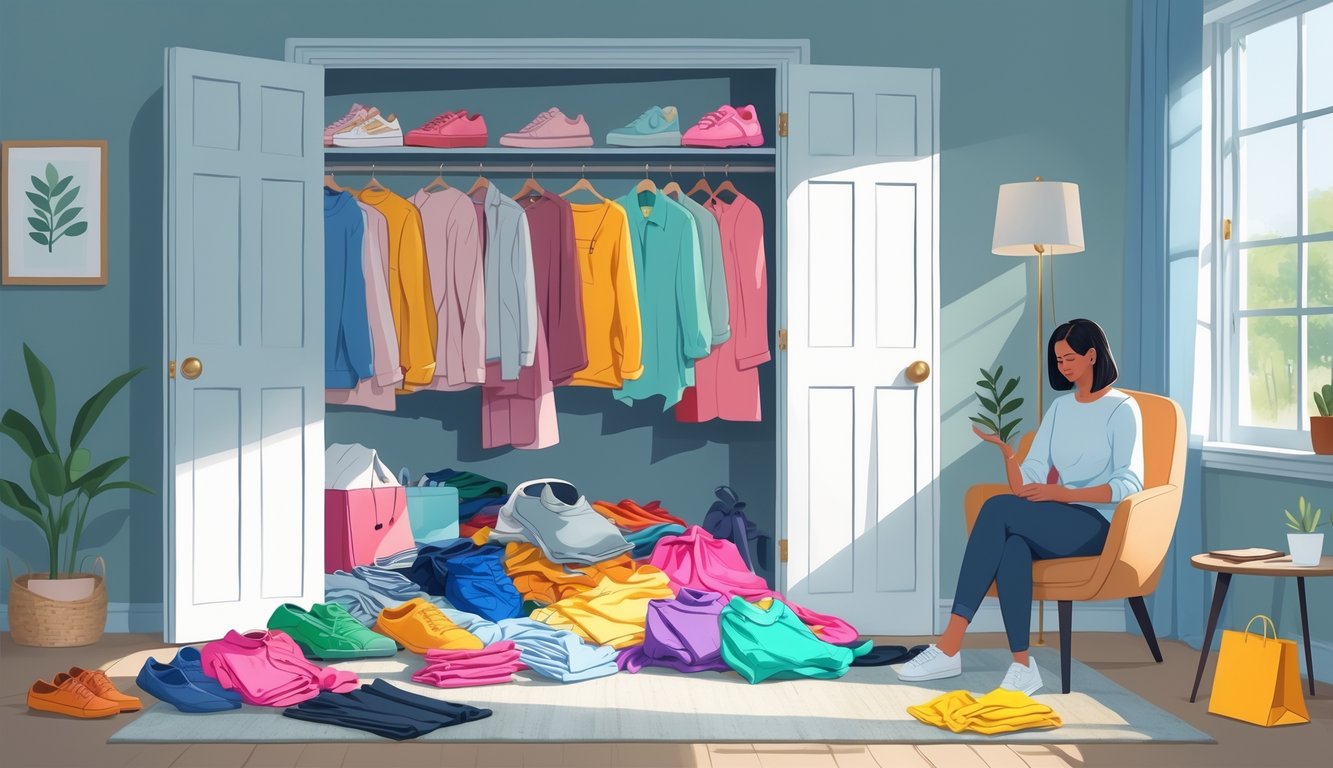
Closet Cleanouts: Revealing the Truth
If all my baggy tees still had tags, would anyone call it smart shopping? Doubt it. Lately, as I yank stuff off hangers and watch the “mistakes” pile up, I start doing weird math—money lost, patterns I never noticed, moods I tried to fix with fast fashion.
Tallying Up the Cost of Impulse Purchases
My closet basically becomes a spreadsheet—boots I wore once (blisters, never again), sequined pants with zero ROI, blazers from “unmissable” sales. What’s the total damage? Bridgette Raes (she’s mercifully gentle about it) says every impulse buy, every “maybe someday” moment, adds up in clutter and cash—sometimes hundreds, maybe thousands, if you’re honest.
I tried writing down prices next to each unplanned buy last week. The total? Nauseating. A 2023 NRF survey says over 60% of shoppers regret at least one impulse splurge per quarter. Multiply that out and no wonder my closet looks like a thrift store exploded. Resale apps barely make a dent, vintage shops shrug, and giving stuff away is nice but doesn’t refill my bank account. If I ever see a “Buy 2, Get Regret Free” sign, maybe I’ll finally listen.
Identifying Patterns in Your Wardrobe
But honestly, the money isn’t even the worst part. Pulling everything out, I start sorting shirts—stripes, solids, “what was I thinking” patterns, stuff clearly meant for someone else’s life. Every cleanout feels like a personality test I didn’t study for. Vogue says to “pause” before buying, but that’s easy when you’re staring at ten pairs of black jeans and half don’t fit—did I think new shoes would magically fix that?
Turns out, emotional logic wins almost every time. I buy the same colors because I forget what I own, and impulse buys thrive on sales hype or social media “must-haves.” Bridgette Raes (yep, her again) actually had a tip that worked—dress for your real life, not some fantasy version. Sounds obvious, but it hit me mid-pile. Sorting through duplicates and “aspirational” buys, my blind spots were glaring: I don’t need another statement jacket. I need shirts I’ll actually wear. But seriously, who let three identical plaid scarves in?
The Real Price of Repeated Impulse Buys
Every time I open my closet—awkward sweaters, half-worn shoes, tags I meant to remove—I see the price of impulse buys, plain as day. None of it shows up in my budget app until it’s too late. And I’m left with less money, way more clutter, and a nagging sense that maybe, just maybe, I should delete those decluttering apps and actually use them. Or not.
Financial Impact and Lost Savings
Crash! That’s my budget every single month—like, I blink and remember I spent $45 on a shirt because it was “extra 20% off.” Why don’t those tiny “just this once” purchases come with sirens at checkout? I read somewhere (Case Western Reserve, some econ professor) that impulse spending is a reward mechanism. Sure, maybe, but my bank account isn’t exactly throwing me a party. These impulse buys just hack away at whatever savings I thought I had, and then my so-called “financial plan”? Yeah, that’s a joke.
Someone at the New York Times said something like, “You can’t miss what you never bought if you just leave the store.” Great, except Instagram exists, and suddenly I’m staring at a $60 moisturizer I’ll use twice, tops. My “necessary vs. nonsense” comparison chart? Useless. Here’s a thing nobody actually does: track every “little” impulse for a week. The total’s always horrific. If it’s not, you probably missed something—seriously, it’s always worse than I think. Brands know exactly what they’re doing, sticking cheap stuff by the register, and my bank statement proves it. Neuroscience folks have entire studies about this impulse buying behavior, but honestly, you don’t need a PhD to know it works.
Mental Clutter and Decision Fatigue
Every morning, I stand in front of this closet jammed with stuff I barely remember buying. It’s not just clutter; it’s like mental static. The Vivienne Files totally got it—impulse buys kill your real options, so I end up trying on three things, hating all of them, and leaving the house late anyway. More stuff doesn’t mean more choice, just more confusion.
Why is it so much easier to click “add to cart” than to donate those dresses I wore once? Every dumb purchase just hangs around, making me anxious. Decision fatigue is real—yeah, research backs it up, but honestly, you just know it when you’re living it. The price isn’t just money; it’s all that wasted brainpower. My therapist threw out this “decluttering” tip—pause ten seconds before buying, ask if tomorrow-me will care. Usually, tomorrow-me doesn’t. Except for last Friday, when I actually returned $28 novelty socks. Still don’t have matching socks, but I don’t care.
Decluttering as Self-Care

Every time I yank shirts off those cheap hangers, it’s a spiral—my mood tanks, motivation just evaporates, and suddenly even showering feels like work. There’s no pretending: keeping all these random impulse buys is expensive in cash, headspace, stress, and, I swear, maybe even skin breakouts (dust bunnies, anyone?). But let’s be honest, tossing a pile of stuff doesn’t magically “fix” anything.



